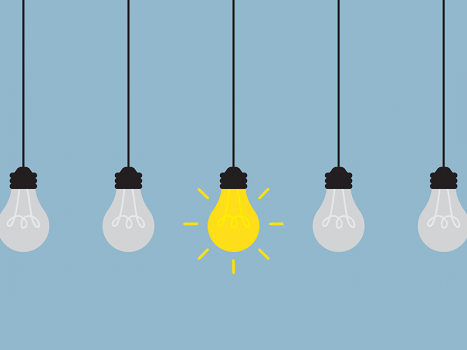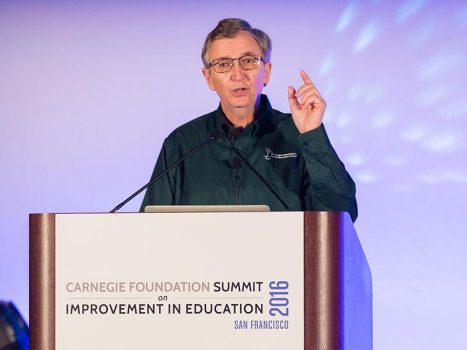As I talk to educators who are engaged with the ideas offered in our book, Learning to Improve, I have come to realize that some concepts are more easily grasped than others. Educators connect readily, for example, to the power of engaging in inquiry about problems in their own classrooms using Plan-Do-Study-Act (PDSA).
On the other hand, the pursuit of solutions to common problems within the scientific structure and norms that characterize a networked improvement community seems more foreign. At base here are deep-seated norms about educators’ autonomy and tacit beliefs that all professional learning must be individual and local. In this regard, the logic of individuals conducting PDSA cycles connects with educators’ past experiences about how they have learned to teach in their own individual classrooms and schools.
In contrast, the education field largely operates without structures where educators learn from the change efforts of others, test them further, and build on them in systematic ways. Consequently, fewer educators have had the opportunity to experience the power of large improvement networks in action. So this difference is not surprising.
The education field largely operates without structures where educators learn from the change efforts of others.
As part of many workshops that we now offer through the Foundation, we engage participants in a learning activity intended to simulate the core process of disciplined inquiry embedded in improvement science. Participants experience how we can learn through iterative PDSA cycles. The activity is designed to illustrate the importance of making predictions about expected outcomes, the special value of failed tests in learning about system behavior, and how, through rapid small tests of change, we learn to solve a problem.
To set up the activity, participants are told that there is some mathematical rule operating in our environment that has generated the following number sequence: 2-4-6.1 (Think about this as analogous to an educational system that generates some desired student outcomes.) The learning goal is to figure out through iterative experimentation what the rule is (that is, by analogy, how the education system actually works to produce these outcomes). Participants are directed to hypothesize what might be going on and then propose a new sequence of numbers to test their hypothesis. The only feedback that they receive from workshop facilitators is whether the new sequence conforms or not to the rule. Working in table teams of five or six, participants are advised to iteratively test until they can confidently conclude that they have identified the rule. From an improvement science perspective, this simulation task is akin to using iterative tests of changes in an educational system in order to consistently produce the outcomes we desire.
The basic idea behind networked improvement communities is that if we can engage enough minds and hearts working in a disciplined fashion on the same problem, and create mechanisms for learning from each other, we can improve more quickly.
Normally, we run through this simulation activity one time, with each table team typically undertaking eight to ten tests before discerning the underlying rule. This in then followed by a facilitated whole-group discussion about what individuals are taking away from the experience. Participants generally find this to be an engaging learning experience.
In a workshop that I offered last fall in Sydney, Australia, I decided to test a wrinkle in this instructional task. I wondered if this same activity could also be used to illustrate the power of attacking a common problem as a structured network. The basic idea behind networked improvement communities is that if we can engage enough minds and hearts working in a disciplined fashion on the same problem, and create mechanisms for learning from each other, we can improve more quickly.
So to test this idea, I asked the workshop teams to go through the same process a second time. I chose a harder math rule but now only allowed each team to do only three tests before I reconvened the whole group. Of the ten teams in this workshop, two had already figured out the new rule. Several other teams seemed to be making some progress but a few less so. As the groups reported out what they had tried and what they were thinking about, it became readily apparent to all involved that, working together, they had just accelerated their collective problem-solving. It wasn’t necessary for each team to figure this out on their own. This was a personal experience in the power of structured networks in action.
A key feature of addressing high-leverage improvement problems through networked improvement communities had become more visible. NICs are a powerful mechanism for accelerating learning to improve. Given the growing chasm between our rising aspirations for our educational systems and what our schools can routinely accomplish, tapping this network power for problem-solving is more important now than ever before. We are unlikely to close this chasm if we continue to act within the separate silos that have characterized our field. We can get better at getting better.
-
This teaching task is an adaptation of one originally developed by Associates in Process Improvement. We are grateful for their willingness to share it with us. Both the opening number sequence and the underlying rule can change from workshop to workshop.
March 31, 2016
When we look for “bright spots,” we tend to see the tools or practices that we believe contribute to the positive results in certain classrooms, schools, or districts. In this way, we identify the what of improvement; but are we overlooking how these changes came to be?
April 13, 2016
At the 2016 Carnegie Summit, Anthony S. Bryk gave a glimpse of what it looks like to struggle towards a common understanding of a problem and develop a working theory of improvement.







